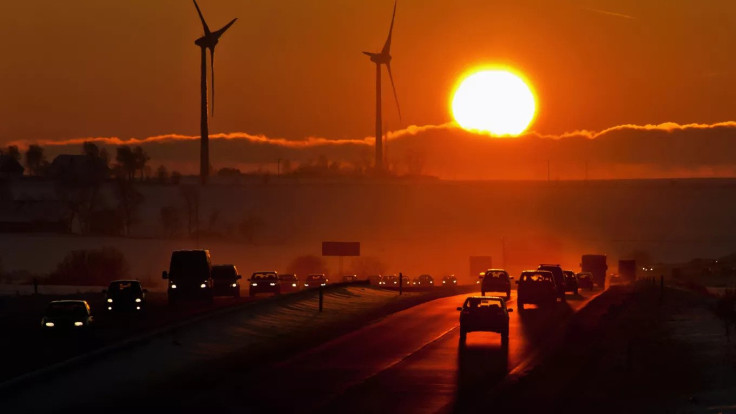US considers blocking the sun to limit global temperatures
The report comes against the backdrop of leading scientists and experts calling for more research on the subject.

The United States has been a pioneer in many fields, including sending people to the moon. Now, the country is reportedly open to studying the possibility of blocking sunlight in an attempt to help fight global warming, according to a report released by the White House last Friday.
Solar radiation modification is being seen as a remedy to limit the earth's annual temperatures, but it can have side effects. "SRM offers the possibility of cooling the planet significantly on a timescale of a few years," reads an excerpt from the report.
"A programme of research into the scientific and societal implications of solar radiation modification (SRM) would enable better-informed decisions about the potential risks and benefits of SRM as a component of climate policy, alongside the foundational elements of greenhouse gas emissions mitigation and adaptation," it added.
However, the report also clarified that currently there are no plans underway to "establish a comprehensive research programme focused on solar radiation modification."
The report comes against the backdrop of leading scientists and experts calling for more research on the subject. The European Commission has also called for more discussion and debate on the possible dangers of geoengineering.
Geoengineering is essentially defined as measures that can alter the atmosphere to make it retain less heat. But this should be a measure of last resort, scientists have said, as there is a chance that it could go disastrously wrong and end up accelerating climate change.
Some of the most drastic plans to slow climate change involve geoengineering. These plans have gotten a lot of attention in the past, as a hopeful technological fix to a human-made problem that, for now, is only going to get bigger. Solar radiation modification is just one such geoengineering project.
Several scientists have been sceptical of the idea of geoengineering. A recent study even suggested that the long-term effects triggered by deliberate climate change reversals could lead to a huge loss of plant and animal species.
Geoengineering can deplete the ozone layer, and injecting sulphur into the atmosphere can lead to drought in the Sahel and the Amazon rainforest. Without the ozone layer protecting us, we would be exposed to ultraviolet light, leading to an increase in skin cancer and eye damage, among other dangers.
In 2012, an international team of scientists found that geoengineering projects could lead to less rainfall in Europe and North America.
The team released huge amounts of sulphur dioxide into the earth's atmosphere to prevent solar radiation from reaching the earth's surface.
Sulphur dioxide acts as a huge mirror in space, reflecting solar radiation before it can reach Earth. As a result, it acts as a tool to control and halt global warming. However, in this case, the result did not turn out as expected. The team found that the method used to combat global warming is actually reducing rainfall.
The study was first published in Earth System Dynamics, an open-access journal of the European Geosciences Union (EGU).
It is said that Earth's average temperature will hit the 1.5ºC threshold around 2030, a decade earlier than projected only three years ago. The UN has urged the world to urgently take steps to stop global warming.
Climate change is causing record-setting temperatures to become more frequent. The UN's Intergovernmental Panel on Climate Change indicates that crossing the 1.5°C threshold risks unleashing far more severe climate change impacts, including more frequent and severe droughts, heatwaves, and rainfall.
The planet is already 1.2°C warmer than in pre-industrial times. In order to limit global warming to 1.5ºC, greenhouse gas emissions must peak before 2025 at the latest and decline by 43 percent by 2030.
Scientists and climate activists have been urging governments to reduce their reliance on fossil fuels such as coal, oil, and gas. These are the major sources of climate-warming greenhouse gas emissions.
According to a report by the UN's World Meteorological Organisation (WMO), two million people have already been killed by extreme weather, climate, and water-related events since 1970.
© Copyright IBTimes 2025. All rights reserved.






















